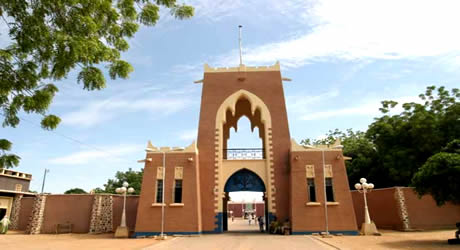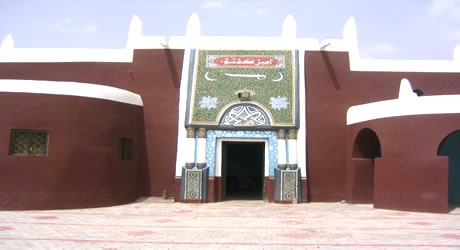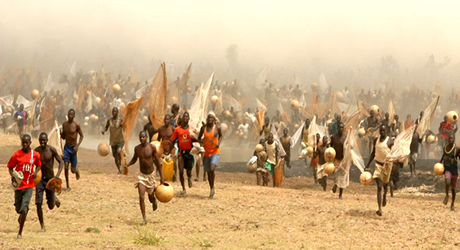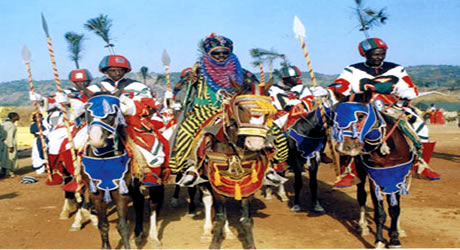Zamfara State –“Farming Is Our Pride”
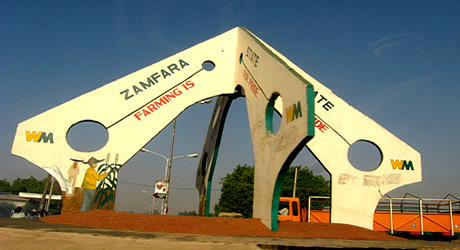
Zamfara State was one of the old Hausa city state. It extends up to the bend of River Rima to the Northwest and River Ka in the Southwest. Zamfara kingdom came into being in the 11th century and flourished up to the 16th century as a city state. Zamfara is dominated by the Hausa and Fulani and the other ethnic groups in the state includes the Kanuri, Nupe and Tivs. The occupation of the people of the state is primarily farming. They produce both food crops and cash crops.
History and People
Zamfara Kingdom was established in the 11th century and flourished up to 16th century as a city-state. It extends up to the bend of River Rima to the north west and River Ka in the south west with its capitals previously in Dutsi, Birnin Zamfara -destroyed by the Gobir Kingdom – and after which a new capital was established in Anka by the second half of the 19th century.
The kingdom became part of the Sokoto Caliphate after the 1804 jihad by Usman dan Fodio. When the British arrived the town of Gusau became an important commercial and administrative center with road and rail networks passing through it . With the creation of States during the Gowon Administration, Zamfara Kingdom became part of the then North West State and latter Sokoto State before the new state of Zamfara was created in 1996 by the military regime of Late Sani Abacha.
People
Zamfara State is mainly populated by Hausa and Fulani people, with some members of Gwari, Kamuku, Kambari, Dukawa, Bussawa and Zabarma ethnic communities. Others include the Igbo, Yoruba, Kanuri, Nupe and Tiv.

Zamfara State is located in the northwestern part of Nigeria with a land area of 38,418sqkm. It borders Niger Republic, Katsina State, Kebbi State and Sokoto State in the north, east, west and northwest respectively. Agriculture is the most important occupation of the people of the state, hence its slogan “farming is our pride”.
Cities and towns
Gusau – the state capital which is an important commercial centre with a heterogeneous population of people from all over Nigeria. Others are Kaura Namoda, Tsafe, Maru, Mafara, Gummi, Anka, Maradun, Bukkuyum, Bakura, Zurmi, Shinkafi, Bungudu and Birnin Magaji.
Climate
The climate of Zamfara is warm tropical with temperature rising up to 38 °C (100.4 °F) between March to May. Rainy season starts in late May to September while the cold season known as Harmattan lasts from December to February.
Kwatarkwashi rock was, during pre-Islamic period, considered to be the site of Iskoki (spirit) worship. A powerful spirit was said to have resided on it. As a result, some hunters settled around the foot of the rock and founded Kwatarkwashi town. There is also a water spring on the rock that gushes out sweet and clean water. Kwatarkwashi is just 12km away from Gusau.
Kanoma Hills
Kanoma people were the 19th century hunters that lived atop the Kanoma hill which provided them with protection against enemies during tribal war. The Kanoma hill is therefore a test for the daring climber. Kanoma is in Maru Local Government Area; a distance of about 34km from Gusau.
Kiyawa city walls
Kiyawa was once the most powerful city situated in the eastern plains of Zamfara State. The ruins of the city walls which is dated back to about two hundred and fifty years are still visible at Kiyawa about 35km from Kauran Namoda. The width of the wall is about 2 meters, and the height about 10meters.
Kuyambana Game Reserve
This is a vast forest area that stretches from the Dajin Rugu to the Kontagora Forest. Wild animals of all kinds such as Elephants, Lions, and Hyena etc can be seen in their natural habitat.
Namoda’s Tomb, Kaura Namoda
Namoda was the Alibawa warrior who was appointed Sarkin Yaki of the eastern campaigns of the Sokoto Jihad. After earning a name for himself during the Jihad, he moved southwards, establishing his new base on the banks of River Gagare calling the town Kauran Namoda. He was killed by the forces of Kiyawa in 1802 and his tomb is now a place of visit by thousands of people yearly.
Sambo Dan Ashafa’s Tomb, Wonaka
Sambo Dan Ashafa was the founder of Gasua town. He died in 1827 and was buried in Wonaka – a village 45 kilometres east of Gasua, is a place of attraction to visitors. Sambo’s descendants are now traditional rulers of Gasua, Wonaka, Yandoto and Ruwan Bore.
Emir of Anika’s Palace
The palace which was built long ago has two gates located at the western part facing the central mosque and it has undergone renovations over time. The palace has a museum in which various artifacts and objects once used in warfare are kept.
Ruins of Yargoje’s Court
Yargoje (a Queen that once ruled Zamfara) was a powerful queen sometimes at par with Queen Amina of Zazzau. She reigned between 1310 and 1350 during which she moved the capital of Zamfara from Dutsi to Kuyambana. The ruins of her palace where she used to hold court is still visible in Kuyambana, a village 60km south of Gasua.
Zamfara State Museun
Located at the premises of J.B Yakubu Secretariat, Gusau, the museum is maintained by Zamfara State History Bureau and it houses a significant collection of artifacts and relics of Zamfara Kingdom.
Bakolori Dam
Constructed on the Rima River some 65km Northwest of Gasua, the dam is a multi-purpose reservoir designed to provide water for domestic, industrial and irrigation purposes. The length of the Dam covers some 8km, and is capable of containing 340 million cubic meters of water annually.

